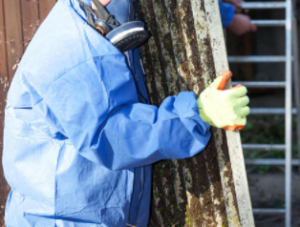It is advisable for individuals residing in Australia to have their homes tested for any traces of asbestos before being allowed to remain living in the home. However, while testing for other minerals or organisms, it is not necessary to test for asbestos. Asbestos in a building is conclusive evidence that there was some form of exposure to the mineral during its construction. The only exception to this is if asbestos testing has been conducted on the premises before the home was constructed, in which case there may be evidence of exposure to the mineral after the structure was built.
Asbestos testing is vital because if asbestos fibres are inhaled and become airborne, they cannot be expelled from the body, thus remaining embedded in the tissues. When this continuous exposure to asbestos continues over an extended period, certain types of cancer can result, including scarring of the lungs tissue and various types of mesotheliomas. Therefore, the presence of asbestos in the building is sufficient to cause health issues. However, the degree to which exposure affects individuals varies from one person to another. For this reason, it is imperative that asbestos testing Adelaide be performed regularly.
An interior and exterior plaster sample must first be excavated to identify whether asbestos was present in a building before occupancy. During this excavation, insulation, ceiling tiles, insulation board, paint, wallpaper, and interior and exterior drywall are tested. Suppose there is any evidence of asbestos in these samples. In that case, samples of all remaining interior and exterior wall and ceiling tiles, as well as any insulation board that is exposed, will also be collected and sent for testing. The sampling of insulation is undertaken so that material samples can be compared to the sample of asbestos.
 In addition to sampling interior and exterior surfaces, indoor air quality sampling is also conducted as part of asbestos testing. This type of sample takes place within the home, while the sample of asbestos fibres outside is taken from the outside of the home. Samples are collected along the floor, ceiling, walls and doors, and samples are also taken from the tops of windows and doors. A typical sample is taken from every inch of floor space and every 100 feet of exterior walls.
In addition to sampling interior and exterior surfaces, indoor air quality sampling is also conducted as part of asbestos testing. This type of sample takes place within the home, while the sample of asbestos fibres outside is taken from the outside of the home. Samples are collected along the floor, ceiling, walls and doors, and samples are also taken from the tops of windows and doors. A typical sample is taken from every inch of floor space and every 100 feet of exterior walls.
Asbestos testing aims to determine the amount of asbestos fibres released into the air and estimate the potential asbestos exposure when the sample of asbestos is analyzed. Some fibres released into the air are choroid, a fluid that circulates throughout the body and stores fat. Other fibres discharge into the soil. Based on the sample of asbestos analyzed, a density dose estimator is performed, determining the amount of asbestos exposure to which humans would be exposed if they were to remain within the sample area for some time. The exposure level is usually expressed as a percent.
While determining the health risks associated with asbestos testing, specific questions need to be answered. Are there any other lung diseases resulting from asbestos exposure? Is there a history of lung cancer in the family of persons involved in the testing? Has anyone had any pre-existing respiratory illness that can be related to exposure to asbestos? Has anyone had any recent or previous lung disease such as emphysema or chronic bronchitis?